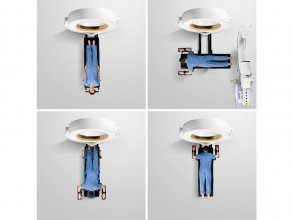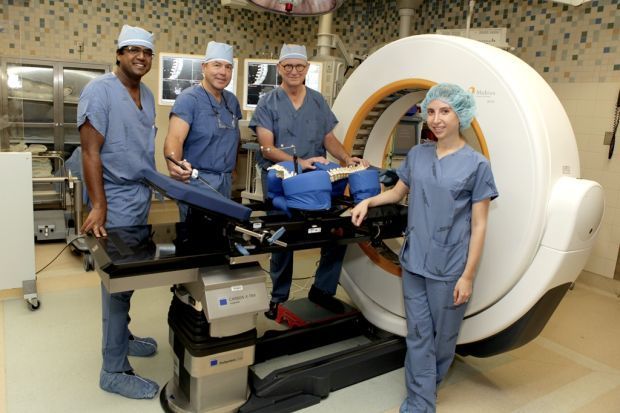

12, 14, 25, 29, 30 Real-time fluoroscopic 3D imaging in the thoracic and lumbar spine 24, 25, 27, 31, 38 resolves the variation in patient positioning before and during surgery, which can affect accuracy during surgical maneuvers.

U se of intraoperative navigation-enabling technologies in spinal surgery has improved the accuracy of pedicular screw positioning over that of free-hand or fluoroscopy-guided methods. The mean exposure to radiation in the iCT-Airo group was significantly lower than that in the O-arm group (15.82 vs 19.12 mSv, respectively p = 0.02). The mean surgical times in both groups were similar (276 and 279 minutes). One patient in the iCT-Airo group and 2 in the O-arm group experienced postoperative neurological deficits related to hardware malposition. Seven (1.4%) screws in the iCT-Airo group and 37 (4.3%) in the O-arm group were repositioned intraoperatively (p = 0.003). Three patients in the iCT-Airo group (3.1%, 95% CI 0%–6.9%) and 3 in the O-arm group (1.8%, 95% CI 0%–4.0%) had a misplaced screw (Heary grade 4 or 5). No statistically significant difference in final accuracy between these 2 groups or in the subpopulation of patients who underwent percutaneous surgery was found. Of those screws, 3 (0.6%) in the iCT-Airo group and 4 (0.5%) in the O-arm group were misplaced. A blinded radiologist graded screw positions in the last intraoperative image according to the Heary classification (grade 1–3 screws were considered correctly placed).Ī total of 1361 screws placed in 97 patients in the iCT-Airo group (503 screws) and in 166 in the O-arm group (858 screws) were graded. Secondary endpoints were the proportion of screws that were repositioned during surgery, the proportion of patients with a postoperative complication related to screw malposition, surgical time, and radiation exposure. The primary endpoint was the proportion of patients with at least 1 screw not correctly positioned according to the last intraoperative image. Most patients underwent surgery for a degenerative or traumatic condition that involved thoracic and lumbar pedicle screw fixation using an open or percutaneous technique.

Data on 97 patients who underwent surgery with iCT-Airo navigation (iCT-Airo group) and 166 with O-arm navigation (O-arm group) were analyzed. The authors performed a retrospective analysis of clinical and surgical data of 263 consecutive patients who underwent thoracic and lumbar spine screw placement in the same center.


 0 kommentar(er)
0 kommentar(er)
